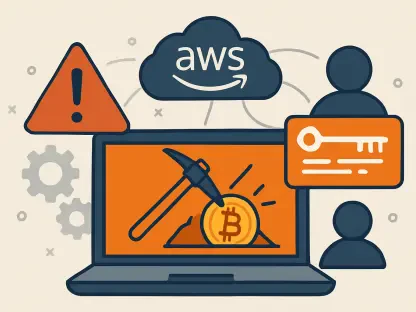In an era where digital security is paramount, a recent update to Google Chrome, the world’s most popular web browser, has brought urgent attention to the persistent threats lurking online, reminding us of the ever-present risks in the digital landscape. With billions of users relying on Chrome for daily browsing, the discovery of critical vulnerabilities that could enable data theft or unauthorized code execution serves as a stark warning. Released recently as version 141.0.7390.65/.66 for Windows and macOS, and 141.0.7390.65 for Linux, this update addresses multiple security flaws, particularly those tied to memory handling. These issues, if left unpatched, could allow attackers to exploit systems without any user interaction, posing a severe threat to personal data and privacy. The urgency to apply this patch cannot be overstated, as the sophistication of these vulnerabilities highlights the ongoing battle between cyber attackers and software developers striving to protect users from harm.
Unveiling the Critical Vulnerabilities
The core of this Chrome update revolves around three significant security flaws that could compromise user safety in distinct yet equally dangerous ways. The most severe, identified as CVE-2025-11458, is a heap-based buffer overflow within Chrome’s Sync component. This memory corruption issue creates an opportunity for attackers to crash the browser or execute malicious code, potentially leading to the installation of spyware or the theft of sensitive information like login credentials. A typical attack might occur when a user visits a compromised website that sends overloaded synchronization data, allowing malicious actors to operate undetected. Google recognized the importance of this discovery by awarding a $5,000 bounty to the security researcher who identified the flaw through its Vulnerability Reward Program, underscoring the critical nature of community collaboration in maintaining browser security.
Beyond the primary flaw, two additional vulnerabilities add to the urgency of this update. CVE-2025-11460, a high-severity use-after-free issue in Chrome’s storage component, enables malicious scripts on web pages to corrupt memory and trigger crashes without requiring any user action beyond loading a page. Meanwhile, CVE-2025-11211, a medium-risk flaw in the WebCodecs API, can be exploited by injecting harmful video data into websites, potentially accessing sensitive information or setting the stage for broader attacks. Although less severe, this flaw remains a concern for drive-by attacks or malicious ads due to its ability to function without user interaction. While Google has not confirmed real-world exploitation of these issues, the lack of disclosure suggests a cautious approach, emphasizing the need for users to act swiftly to protect their systems from potential threats.
The Urgency of Updating and Staying Vigilant
Given Chrome’s vast user base, it remains a prime target for cybercriminals, making rapid response to security threats a necessity. The nature of these vulnerabilities—requiring no user interaction or elevated privileges—illustrates the sophistication of modern attacks and the importance of installing updates as soon as they become available. Delaying the update to version 141.0.7390.65/.66 could leave systems exposed to data theft, browser instability, or worse, unauthorized code execution. The process is straightforward, typically accessible through the browser’s settings menu under the “About Chrome” section, where users can trigger an automatic update. This proactive step is not just a technical fix but a critical defense against evolving cyber risks that exploit even the smallest gaps in security protocols, ensuring that personal and professional data remain safeguarded.
However, updating alone is not enough to guarantee safety in today’s complex online environment. Users must complement technical patches with cautious browsing habits to create a robust defense against potential threats. Avoiding suspicious websites, refraining from installing unverified extensions, and exercising care with downloads are essential practices that reduce exposure to risks. These vulnerabilities serve as a reminder that even widely used software like Chrome is not immune to flaws, and the responsibility for security is shared between developers and users. By staying informed about updates and adopting a mindset of vigilance, individuals can significantly lower the chances of falling victim to attacks that capitalize on unpatched systems or careless online behavior, reinforcing the importance of a dual approach to digital protection.
Moving Forward with Enhanced Security
Reflecting on this recent Chrome update, it becomes evident that Google acted promptly to address critical data-stealing bugs, demonstrating a strong commitment to user safety. The swift release of patches for these memory-related vulnerabilities mitigated immediate risks and prevented potential widespread exploitation. Looking ahead, users are encouraged to take actionable steps by ensuring their browsers are updated to the latest version and by maintaining safe online practices. The shared responsibility between software developers and individuals highlights the need for ongoing awareness in an ever-evolving threat landscape. As cyber challenges continue to grow, adopting a proactive stance—through both technical updates and personal caution—emerges as the most effective strategy to safeguard data and privacy against future risks.









